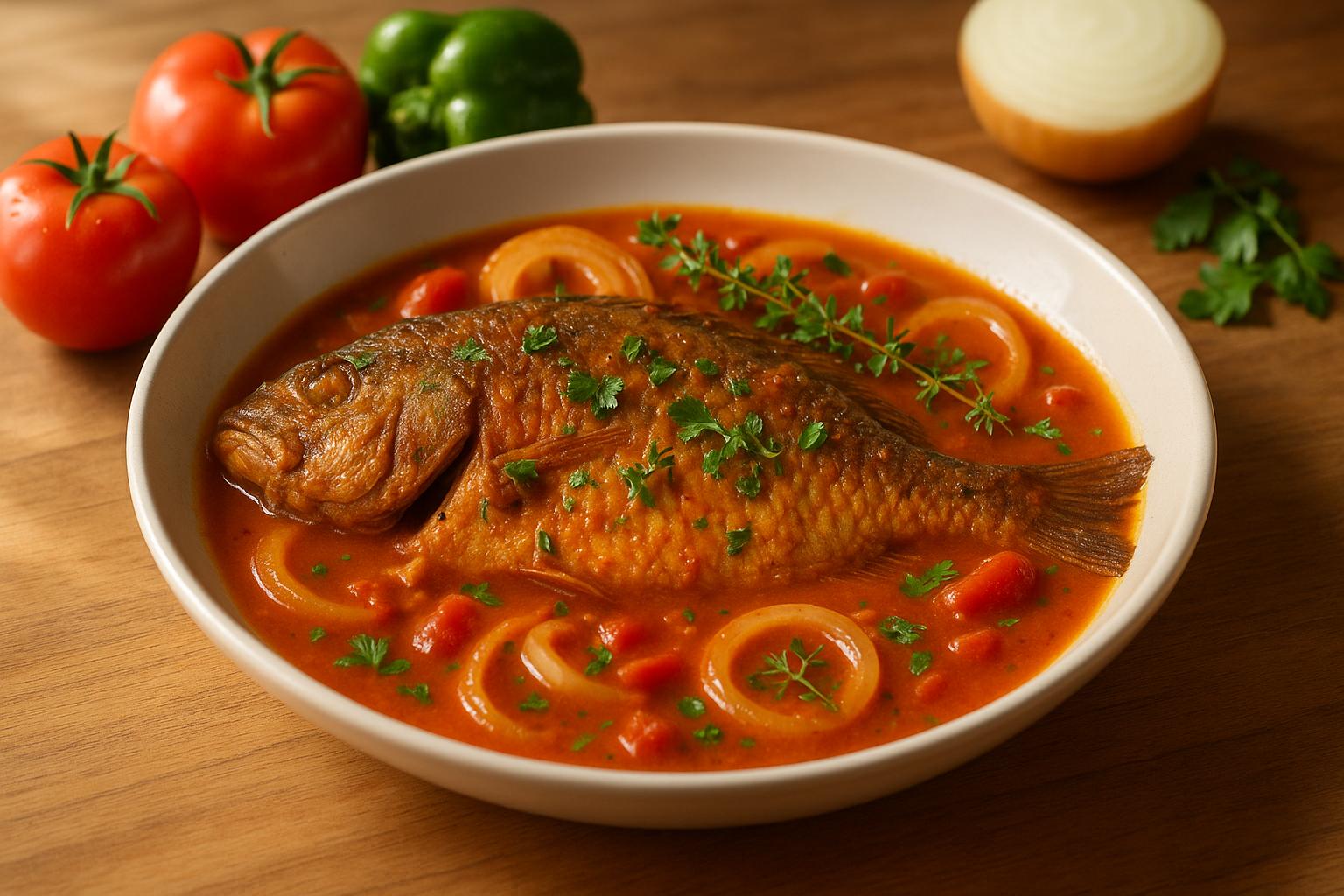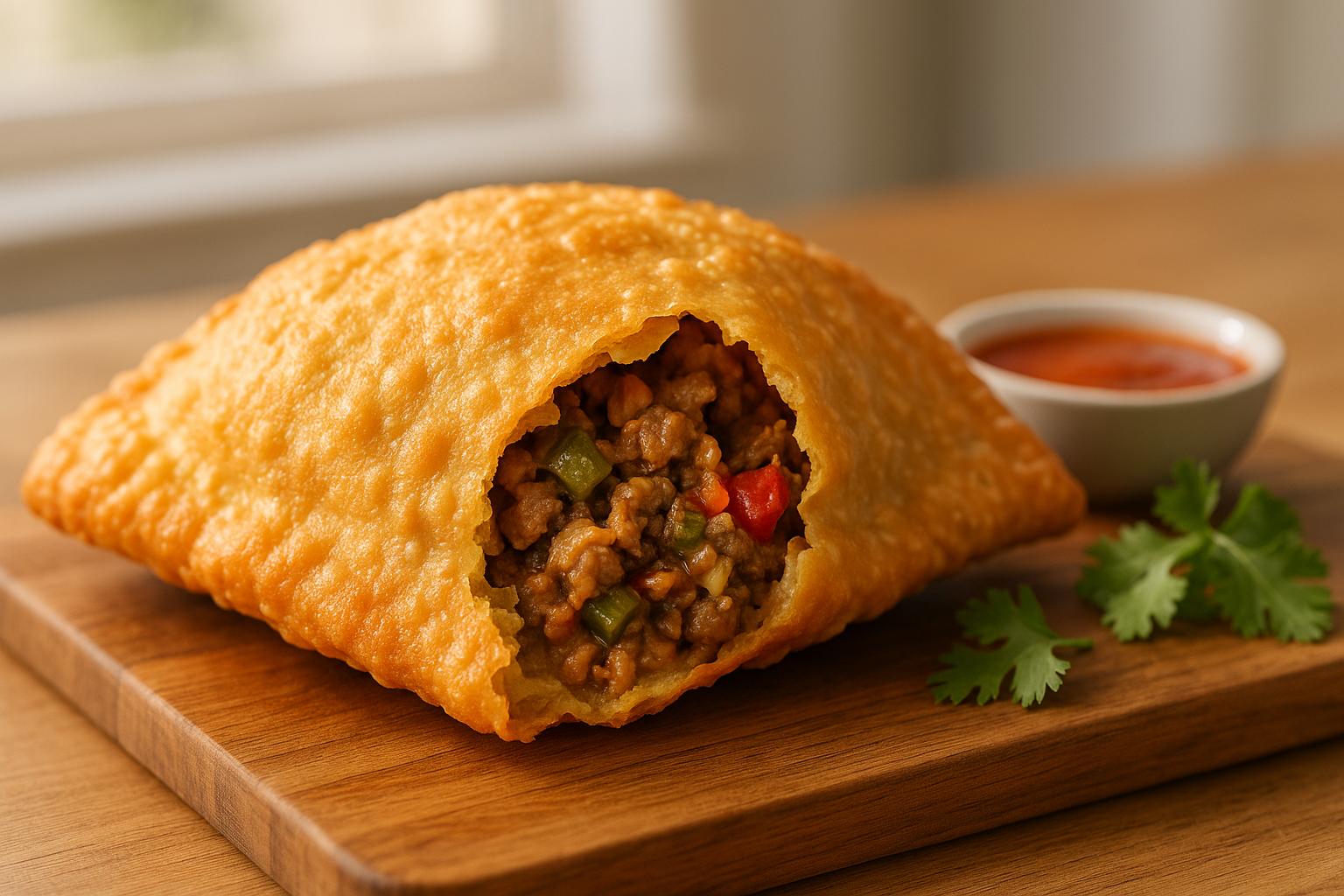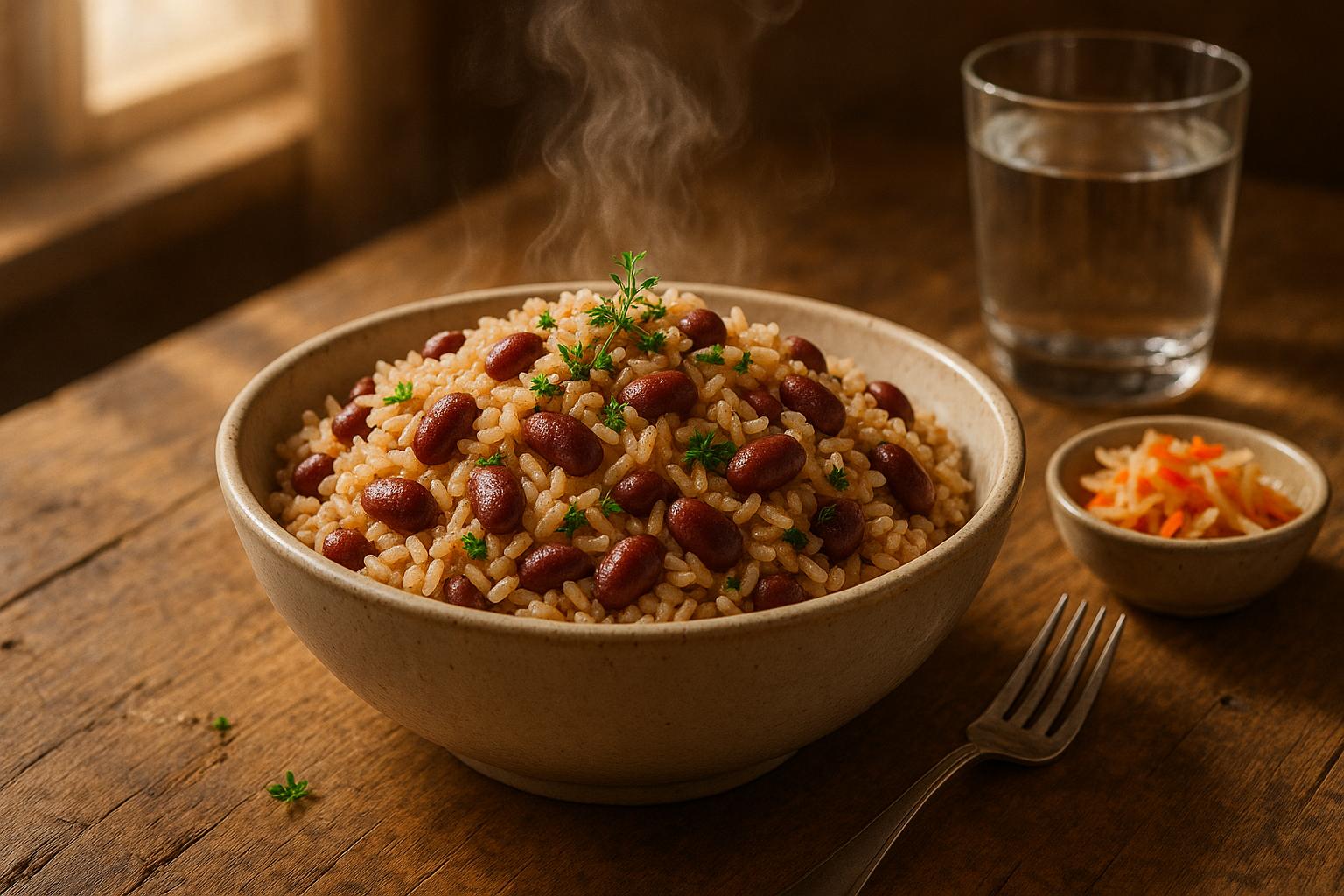Food offerings in Vodou rituals serve as a bridge between the physical and spiritual realms, connecting practitioners with spirits (lwa) and ancestors. These offerings are not just acts of devotion but are deeply tied to Haiti’s agricultural roots and communal traditions. Here's what you need to know:
- Purpose: Food offerings honor spirits, strengthen spiritual connections, and reflect gratitude.
- Key Offerings: Staples like corn, cassava, tropical fruits, and rum are commonly used, each tied to specific spirits and meanings.
- Preparation: Rituals involve creating sacred veve symbols, precise timing, and communal effort in preparing and presenting offerings.
- Regional Variations: Practices differ based on local ingredients and diaspora adaptations, with substitutions made to preserve spiritual essence.
These rituals emphasize respect for life, resourcefulness, and community, ensuring the enduring connection between people, their heritage, and the divine.
What Are Appropriate Offerings For Baron Samedi? - African Roots And Routes
Main Food Offerings and Their Meanings
In Vodou, food offerings carry profound spiritual significance, acting as a bridge between practitioners and specific lwa (spirits). These offerings are deeply rooted in tradition, reflecting the preferences of the spirits and serving as a way to honor them while strengthening spiritual connections. From simple staples to more elaborate items, each offering holds a unique purpose and meaning.
Basic Foods in Rituals
Corn (maize) holds a central place in Vodou rituals. Ground cornmeal is used to create sacred veve symbols, which channel spiritual energy and summon particular deities. Grilled corn on the cob often accompanies these drawings, symbolizing respect for both the spirits and Haiti's agricultural roots [1].
For Papa Legba, the guardian of spiritual gateways, offerings typically include corn paired with grilled peanuts and yuca. These foods are believed to help open the gates between the physical and spiritual realms [1].
The harvest festival Manje Yanm highlights tubers like cassava and yuca, representing nourishment and abundance [1].
Fruits, Sweets, and Drinks
Sweet offerings are often associated with lwa linked to love, beauty, and prosperity. Bananas and coconuts frequently appear on altars, their sweetness symbolizing the energies of love and attraction. For instance, Erzulie Freda, the spirit of love and luxury, is celebrated with offerings like pink cakes, candies, and other sweet treats that reflect her elegant and romantic nature [2][3].
Liquid offerings are another key element in Vodou ceremonies. Rum and wine are poured as libations to invoke the presence of ancestral spirits. The Gede spirits, who oversee death and rebirth, are particularly connected to rum offerings, which serve as a way to honor their transformative power [3].
Animal Offerings in Vodou
Animal offerings also play a significant role in Vodou rituals. The black Creole pig, for example, is often sacrificed in ceremonies dedicated to Erzulie Dantor. This offering represents protection, strength, and transformation [1][3].
| Offering Type | Spirit | Symbolic Meaning |
|---|---|---|
| Corn (grilled) | Papa Legba | Gateway opening, communication |
| Pink cakes/sweets | Erzulie Freda | Love, beauty, luxury |
| Black Creole pig | Erzulie Dantor | Protection, transformation, power |
| Rum libations | Gede spirits | Death, rebirth, ancestral connection |
| Cassava/yuca | Harvest spirits | Abundance, agricultural heritage |
How Food Offerings Are Prepared and Presented
In Vodou ceremonies, preparing and presenting food offerings is a communal effort led by spiritual leaders. This shared process not only ensures the offerings meet ritual standards but also strengthens the bond between participants and the divine.
Drawing Veve and Setting Up Altars
The preparation of offerings begins with the creation of the veve - sacred symbols that serve as spiritual doorways for specific lwa. These intricate patterns, traditionally drawn by the houngan or mambo, are made using cornmeal or flour, carefully sprinkled on the ground at the center of the ceremonial space. Each line drawn is a deliberate act of devotion and spiritual intention[1][3].
Once the veve is complete, food offerings are arranged either directly on the ground or on special plates and trays placed around the symbols. The altar is then adorned with flowers, candles, and rum, enhancing the spiritual atmosphere. Community members often assist in arranging these elements, creating a collaborative and reverent environment.
Timing and Ritual Order
The power of these offerings is further amplified by precise timing and adherence to ritual order. Vodou ceremonies follow a structured sequence known as regleman, where every step is carefully timed. Some offerings are consecrated overnight to deepen their spiritual significance[3]. Others are presented at specific moments, guided by the houngan or mambo, ensuring that the ceremony flows according to tradition.
The ritual begins with honoring Papa Legba, the spiritual gatekeeper, by placing offerings near his veve. From there, the ceremony unfolds with roles distributed among participants, including music and other acts of service, all aligned with the sacred sequence of regleman[1][3].
Maintaining ritual purity is essential throughout the process. Participants wash their hands, use clean utensils, and handle offerings with care. The houngan or mambo often blesses the food beforehand, and certain dishes may be prepared without salt or other additives to suit the preferences of specific lwa[1].
For practitioners in the United States, finding authentic ingredients can be a challenge. Resources like HaitianFoods.org provide valuable guidance on traditional Haitian foods and their significance, helping diaspora communities preserve the authenticity of these sacred rituals.
sbb-itb-80c33ff
Regional and Diaspora Differences in Food Offerings
Vodou food offerings differ widely depending on the region and community, shaped by local agricultural patterns, ingredient availability, and community practices. These differences highlight how Vodou remains rooted in its spiritual core while adapting to local circumstances. Regional nuances naturally extend to practices seen during both seasonal festivals in Haiti and within diaspora communities.
Seasonal Festivals and Local Practices
In Haiti, the agricultural calendar plays a central role in determining the timing and composition of Vodou food offerings. As Dady Chery explains:
Haitian religion and culture are so linked to local agriculture that Vodou ceremonies are routinely called manje lwa: food for the gods
[4]. Seasonal harvests dictate the ingredients and timing of rituals.
One of the most notable examples is Manje Yanm, a two-day harvest festival held annually around November 25–26. This festival celebrates the yuca harvest and honors Zaka, the Vodou god of agriculture. Freshly harvested yuca takes center stage, accompanied by other seasonal staples such as plantains, rice and beans, avocado, corn, barley, and fish. On the first day, these foods are harvested, consecrated, and offered to Zaka. The second day involves cooking the offerings, with a portion buried for the lwa and the rest shared in a communal feast. This ritual underscores the deep spiritual and cultural connection between Africa and the New World, with yuca symbolizing this bond.
A key belief in Vodou underpins these practices:
The gods gain strength in proportion to the variety and care invested in their offerings
[4]. Using fresh, locally harvested ingredients at their peak is seen as essential to enhancing the spiritual power of the offerings.
Changes in the Diaspora
While Haitian Vodou remains deeply tied to the land, practitioners in diaspora communities have had to adapt their traditions to new environments. These adaptations reflect both the challenges and creativity involved in preserving spiritual practices far from their origins.
In the diaspora, limited ritual spaces often require innovative solutions. Many practitioners conduct ceremonies in basements, where traditional elements like the poto mitan (central post) are absent[3]. This limitation influences how food offerings are arranged and presented, requiring adjustments to fit the available space.
Ingredient availability is another significant hurdle. Diaspora communities frequently substitute local ingredients to replicate the flavors and spiritual essence of homeland offerings. This blending of old and new allows practitioners to maintain the heart of their rituals while working with what’s accessible. For example, New Orleans-style Vodou has incorporated local influences, with Papa Legba sometimes receiving offerings of red beans and rice. Some even use Zatarain's brand rice as a modern nod to traditional dishes[5]. Similarly, when preparing international dishes like Russian buckwheat, practitioners may set aside a portion specifically for Papa Legba, showing how multicultural influences can become part of established rituals.
These adaptations also serve as acts of cultural preservation. In diaspora communities, cooking and sharing traditional meals becomes a way to resist assimilation and affirm Haitian heritage. Preparing these meals helps practitioners recreate the scents and tastes of home, evoking memories of family kitchens and the teachings of mothers and grandmothers. Each substituted ingredient or modified recipe reflects both necessity and a commitment to preserving cultural identity.
For those seeking authentic Haitian ingredients in the United States, resources like HaitianFoods.org provide valuable guidance. These platforms help diaspora communities maintain their connection to both the spiritual and culinary aspects of their heritage, bridging the gap between tradition and the realities of life in a new environment.
Conclusion: The Spiritual and Community Value of Food in Vodou
In Vodou, food offerings are far more than simple gestures - they are the spiritual thread that ties practitioners to their ancestors, their community, and their roots. As Dady Chery eloquently puts it:
Haitian religion and culture are so linked to local agriculture that Vodou ceremonies are routinely called manje lwa: food for the gods
[4].
These offerings go beyond mere sustenance, symbolizing the bond between the divine and the human. They nourish the spirits, keeping them engaged in earthly matters, while also reflecting the giver's deep respect and willingness to offer something precious. On a broader level, the rituals surrounding these offerings bring people together. Preparing and sharing the food becomes a collaborative act, where individuals join forces in sosyete soutyen - support societies - to provide for temples and communal feasts. This transforms personal devotion into a shared celebration, reinforcing community ties.
For those in diaspora communities, traditional meals take on an even deeper meaning. Cooking and sharing these dishes help maintain a connection to their heritage, ensuring that the flavors and rituals of home remain alive. Websites like HaitianFoods.org offer a window into these traditions, showcasing authentic recipes and their rich cultural context.
Ultimately, every offering in Vodou is more than an act of devotion - it’s a way to strengthen bonds with ancestors, unite communities, and honor the divine. As Dady Chery beautifully summarizes:
the practices of Haitian Vodou represent religion, unadulterated, unappropriated and at its best: not an infantilizing force that habituates people to their prostration before a greater power, but a cultural force that anchors people in the lands and waters around them and furnishes them with the practices for a joyful, sustainable life
[4]. Through these rituals, Vodou preserves its sacred traditions, ensuring they endure for generations to come.
FAQs
How do Vodou practitioners adapt food offerings when traditional ingredients are hard to find?
Vodou practitioners in diaspora communities often adjust their food offerings by incorporating locally available ingredients when traditional ones are hard to find. For example, if certain herbs, spices, or animal products are unavailable, they select alternatives that carry a comparable spiritual meaning and importance.
This approach helps practitioners maintain the integrity of their rituals, honoring the spirits while working within the limitations of their surroundings. By doing so, they preserve the connection to their spiritual and cultural heritage, ensuring the rituals remain both significant and impactful, even far from their Haitian origins.
What are Veve symbols in Vodou food offerings, and why are they important?
Veve symbols hold a special place in Vodou rituals, serving as sacred designs that represent and call upon specific lwa (spirits). These intricate patterns, often crafted using materials like cornmeal, ash, or flour, act as spiritual doorways, inviting the lwa to join the ceremony.
Each Veve is uniquely tied to a particular spirit, reflecting its characteristics and powers. When it comes to food offerings, these symbols amplify the ritual’s spiritual depth, strengthening the bond between practitioners and the divine. Their presence is a vital part of honoring the spirits and facilitating communication during Vodou ceremonies.
What role do community members play in preparing and presenting food offerings during Vodou rituals?
In Vodou rituals, the preparation and presentation of food offerings are a deeply communal effort, reflecting the shared devotion and respect for the loa (spirits). These offerings are crafted with care and reverence, symbolizing gratitude and spiritual connection, while also bringing the community together in a meaningful way.
Beyond their spiritual purpose, these rituals play a vital role in preserving traditions and cultural identity. The collaborative process not only strengthens ties among community members but also ensures that the rich legacy of Vodou remains alive and vibrant for future generations.


